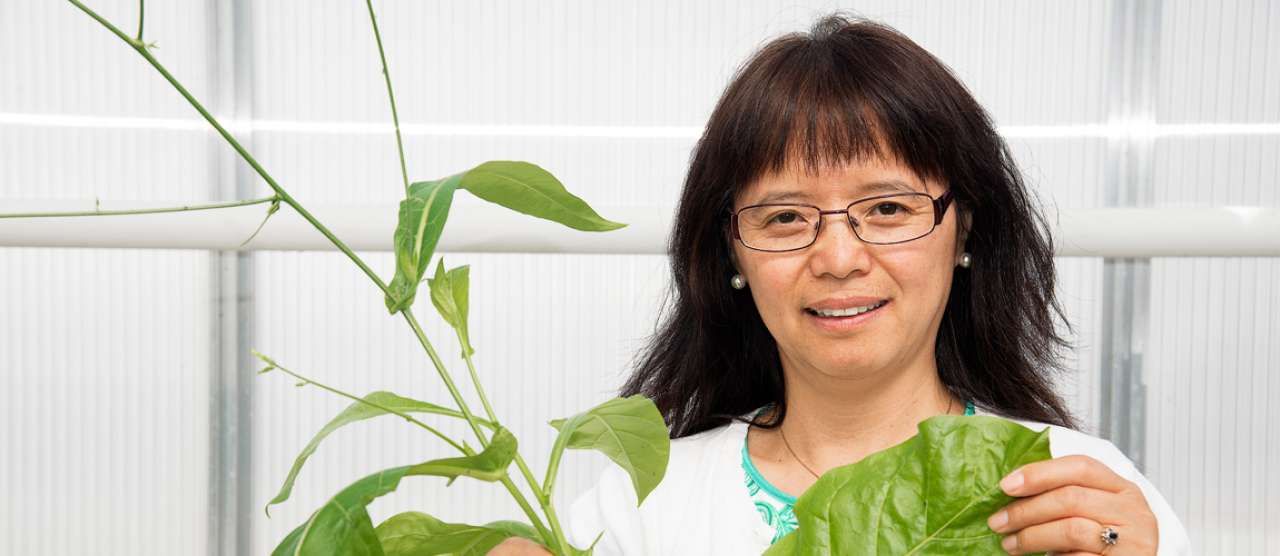Smart tobacco

Research Professor Jihong Liu Clarke. Foto: Erling Fløistad.
Genetically modified tobacco plants can act as "green factories" where cheap vaccines for humans and animals, eco-friendly fuel and special products for industry are produced.
The possibilities inherent in genetically modified tobacco plants can be compared to the development of the mobile phone. Today's smart phones are so much more than just a regular telephone. Similarly, today's tobacco plants can in the future become “smart tobacco”.
"A tobacco plant is still a tobacco plant, but we can insert various snippets of DNA, which can steer the production of the substances we're after", says Research Professor Jihong Liu Clarke.
Plant scientists insert DNA or genetic material in the plants. DNA molecules, for example from bacteria or fungi, "programme" the tobacco plant to produce the substances that researchers want. When the tobacco plants have grown, the leaves are harvested and the relevant substances extracted.
In principle, this method can be used to produce vaccines against various diseases. Both the aquaculture industry and forest industry also need special products which could be produced in tobacco at a reasonable cost, for example fish vaccines or enzymes that can break down wood for production of bioethanol. Enzymes are the most costly part of the production of bioethanol, aside from the actual raw materials. If we succeed with this research, this could be the start of a cheaper way to produce enzymes.
The technology is the same, and can be used to produce many different products. That is what is so smart and sustainable.
"If one can build simple greenhouses for the cultivation of tobacco plants for the production of enzymes, and later perhaps for fish vaccines, there are great opportunities for farmers all over Norway", says Liu Clarke finally.

